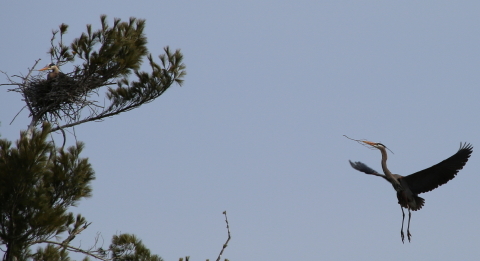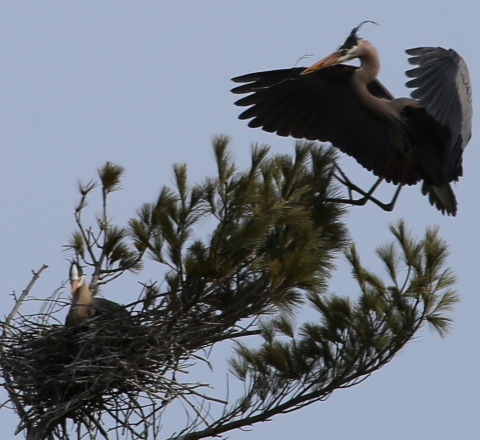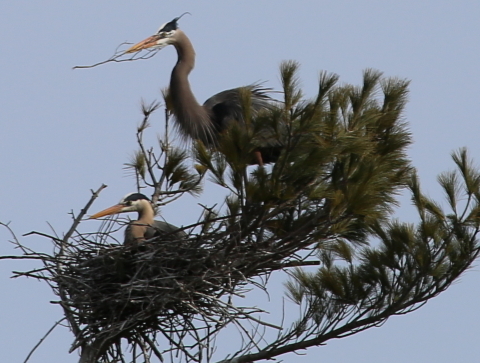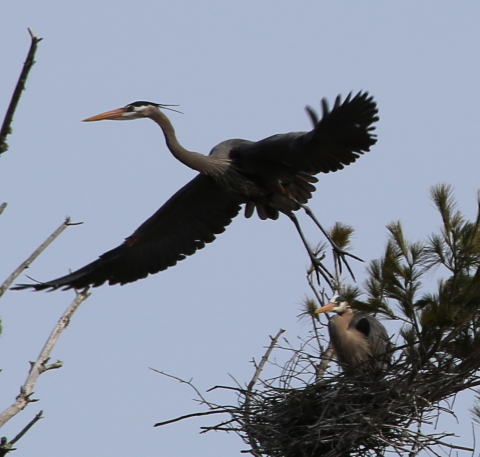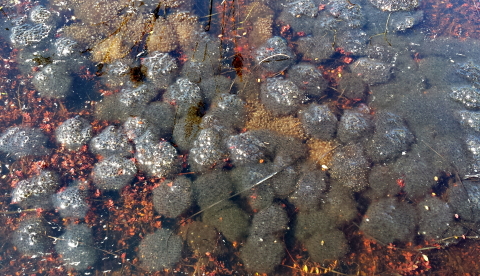Don Lewis Examines Male Spotted Turtle at SouthCoast Rookery
Close by the SouthCoast rookery with its assortment of great blue heron and osprey treetop aeries, the Turtle Journal team monitors a spotted turtle mating aggregation that occupies a small portion of an NSTAR power-line right-of-way. Â Over the past couple of years NSTAR has brought in heavy machinery in, so far, failed attempts to fill in these wetlands and probable vernal pools. Â Last year the ground was torn up by tracked vehicles that gouged through the swampy terrain.
Male Spotted Turtle #222 (Clemmys guttata)
On Monday, April 7th, the Turtle Journal team observed Spotted Turtle #222 basking in this mating aggregation. Â A mature male, #222 weighed 138 grams (4.9 ounces) and his shell measured 9.72 centimeters (3.8 inches). Â He is a recapture at this site from the time before NSTAR tried to fill in these wetlands. Â So, at least for the nonce, it appears that this mating aggregation continues despite human efforts to degrade the natural habitat.
Vive La Difference!
(Telling He from She)
Male Spotted Turtle #222 Plastron (Bottom Shell)
Female Spotted Turtle #105 Plastron (Bottom Shell)
Telling the difference between males and females proves an extremely useful research skill. Â Spotted turtles exhibit gender dichromatism. Â Females, such as #105 immediately above, have brightly colored chins; males, like #222, have drably colored chins. Â Females have thin, dainty tails and males have thick, showy tails. Â Females also have flat, washboard abs, and males have an indentation in their abdominal plastron (bottom shell) scutes. Â Although some might suggest that the following distinction is subjective, females are exquisitely beautiful and males are merely strikingly handsome. Â Now you, too, can celebrate “la difference.”









